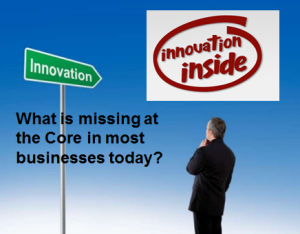 This is the third and final part of this series on the rethinking within the management of the innovation system and how to view the core.
This is the third and final part of this series on the rethinking within the management of the innovation system and how to view the core.
Part three– Technology will drive innovation change.
We are in need of a different sustaining capacity, one build around innovation as its continuous core; constantly evolving, adapting, learning and adjusting, in perpetual motion.
We are heading for transformational change
Digital technology and the cloud are offering us a radically different conduit to achieve a new engagement process within our organizations. Innovation is going to be very much caught up in this transformational change.
Technology and data will be innovation’s catalyst for change.


